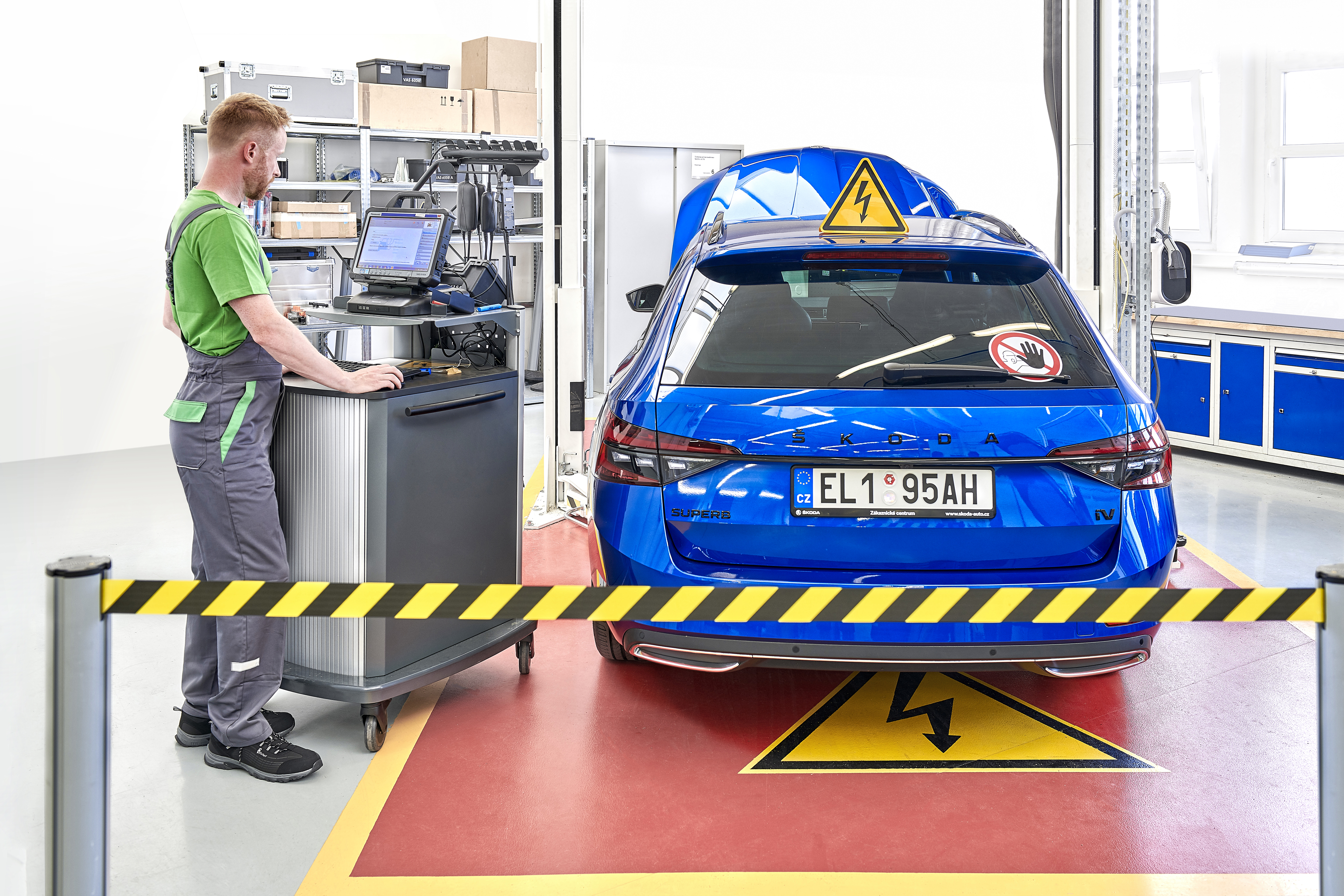Fewer parts, fewer worries
As with other clean electric vehicles, regular service checks are also cheaper for the ENYAQ iV than for cars with combustion engines. The reason is simple: there’s no need to change the oil, oil and fuel filters or spark plugs. The only standard tasks left are changing the interior dust and pollen filter, brake fluid, and checking the air conditioning, wipers and other consumables. Electric cars also have to have their coolant changed after a few years, but even this is cheaper than similar servicing for conventional cars.
 Conventional and electric vehicles can both be found in authorised ŠKODA service centres.
Conventional and electric vehicles can both be found in authorised ŠKODA service centres.
And an electric car saves on service costs in other ways, too. “Thanks to recuperation, electric cars go easier on the braking system, and there is no need to replace worn parts such as timing belts, injectors, the clutch, dual-mass flywheel, particulate filters, EGR valve, turbocharger and other parts,” says Karel Starý.



























